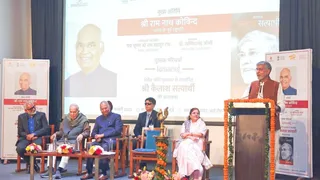The Dandi March, also known as the Salt Satyagraha, was a pivotal moment in India's struggle for independence from British rule. Led by Mahatma Gandhi, this 24-day march from Sabarmati Ashram to Dandi, a coastal village in Gujarat, began on March 12, 1930, and culminated in the symbolic act of making salt from seawater, defying the British salt tax.
The British government's salt tax was a particularly egregious example of its oppressive policies. Salt, a vital necessity for life, was heavily taxed, impacting even the poorest Indians. Gandhi saw the salt tax as a perfect symbol of the injustice of British rule and a strategic point to launch a mass civil disobedience movement.
The march itself was a powerful display of nonviolent resistance. Gandhi, along with thousands of followers, walked the 240 miles, facing hardship and potential violence with unwavering determination. News of the march spread rapidly, attracting worldwide attention and inspiring Indians across the country to participate in acts of civil disobedience.
The making of salt at Dandi on April 6, 1930, was a deeply symbolic act. By openly defying the salt tax, Gandhi challenged the legitimacy of the British Raj and inspired millions to join the movement. The act of making salt, a simple everyday act, became a potent symbol of national resistance and self-reliance.
The repercussions of the Dandi March were profound. The British responded with arrests and widespread repression, yet the movement gained momentum. Millions of Indians participated in acts of civil disobedience, including making salt illegally, which led to widespread arrests and further galvanized the independence movement. The salt Satyagraha exposed the weaknesses of the British administration and demonstrated the power of nonviolent resistance on a mass scale.
The Dandi March is significant for several reasons: It marked a strategic shift in Gandhi's approach to the independence movement, emphasizing mass participation and nonviolent civil disobedience; it brought the issue of India's struggle for independence to the global stage, garnering international sympathy and support; it demonstrated the efficacy of Satyagraha, or nonviolent resistance, as a powerful tool for social and political change; and it ultimately played a key role in weakening the British Empire's hold on India and paving the way for India's eventual independence in 1947.
The legacy of the Dandi March continues to inspire movements for social justice and freedom around the world. It stands as a testament to the power of nonviolent resistance, courage in the face of oppression, and the enduring human desire for self-determination.
The Dandi March remains a potent symbol of India's struggle for freedom, reminding us of the sacrifices made and the principles of non-violent resistance that continue to inspire people across the globe.

















